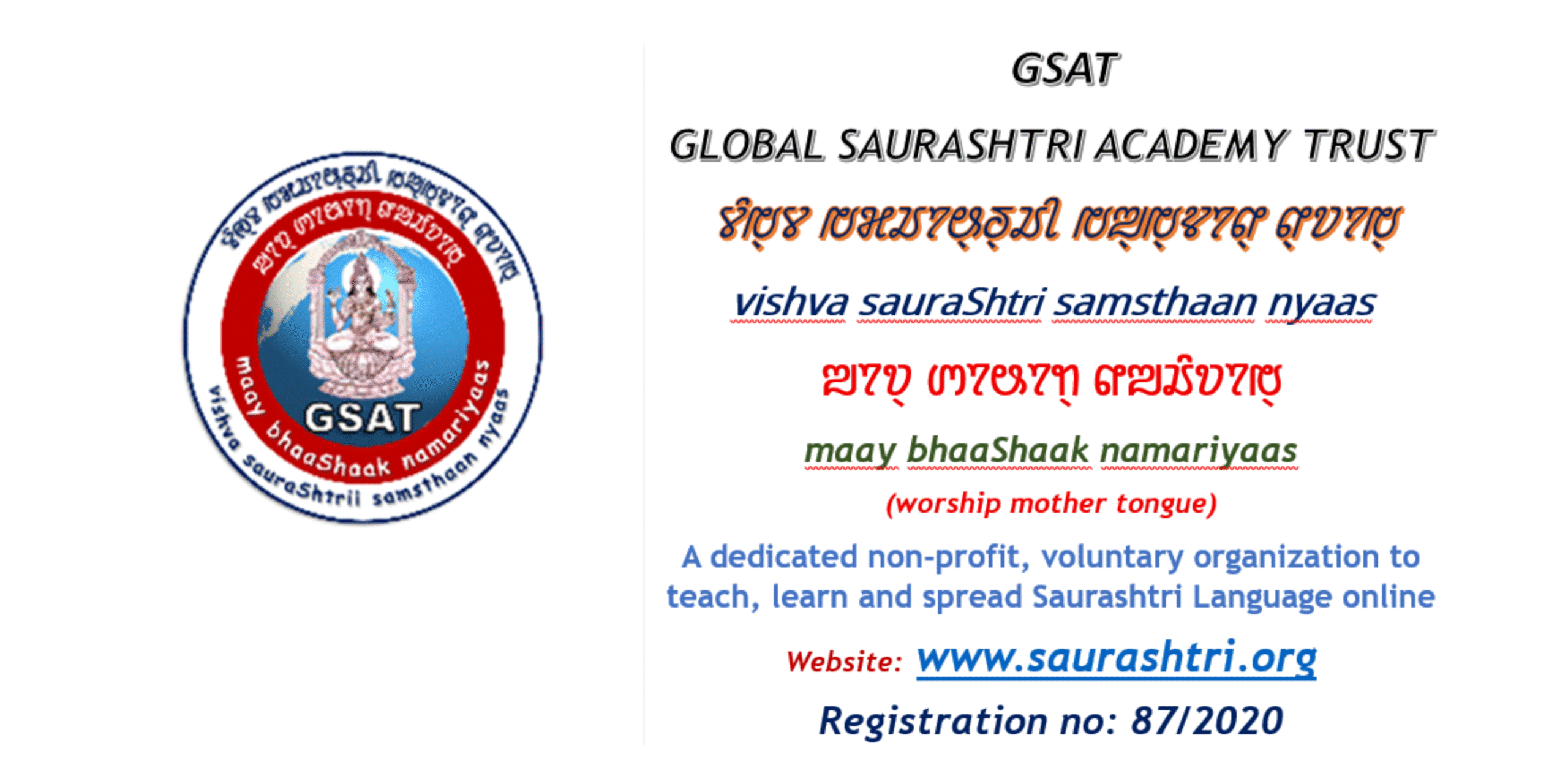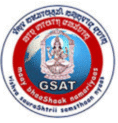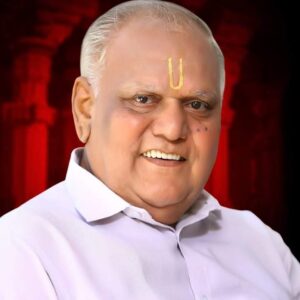
HISTORY OF SAURASHTRIANS
Saurashtrians (also called Saurashtras) are a globally spread linguistic minority community who speak Saurashtri as their mother-tongue. Renowned as a silk-weaving and silk-trading community for nearly eight hundred years of their migratory life, they have now settled in the various cities of Tamil Nadu in India since the 17th century, and are now spread all over the major countries of the world.
The name “Saurashtra” lends itself to several interpretations — it is regarded as a compound name meaning “good state” (su = good, and rashtra = state); next, “saura” (surya) in Sanskrit is the Sun, and in this sense, the people in this “rashtra” are worshippers in the land of the Sun God. In the modified spelling “Sourashtrians” (sou = hundred), they are deemed as the erstwhile rulers of a hundred countries.
Whatever their eponymous name, basically Saurashtrians are the ancient, original inhabitants of Saurashtram who spoke Sauraseni, a Prakrit language, in the Kathiawar peninsula of modern Gujarat. Their antiquity dates back to the Puranic ages, which is evidenced by the numerous references to their state or kingdom in the Ramayana and the Mahabharata. Saurashtrians, hence, are proud of hailing from an ancient royal race.
Though originally belonging to the community of Pancha Gawda Brahmins, and later called Saurashtri Brahmins culturally, Saurashtrians in Gujarat had been a predominantly mercantile community with matchless skills in silk-weaving and trading. After Gajni Muhammad’s demolition of the magnificent Somnath Temple and plundering of its treasures, Saurashtrians stoutly resisted the religious conversions forced upon them by the Islamic invaders and left their homeland of Saurashtra for survival. Thus started the community’s southward migration from the Kathiyavar peninsula around 1025 CE. Their centuries-long migratory history covers their settlements with their flourishing silk trade Tamil Nadu in various regions: Dwaraka in Gujarat (about 60 years), Devagiri in Maharashtra (till 1307), Vijayanagar in Andhra Pradesh (from 1312), and finally the cities of Tamil Nadu (before 1551) ruled at that time by Naicker kings. Whichever kingdom they moved in, their industry and unparalleled silk-weaving skills earned them the patronage of kings and royal families. The temple city of Madurai still has a large area of Saurashtrian population (the Mahal or Palace Streets) juxtaposed to the famous Tirumalai Naicker Palace, which exhibits the honour the king had conferred upon the magnificent silk-weaving wizards of the Naicker kingdom.
Four centuries of happy socio-cultural interactions with the people of Tamil Nadu have made Saurashtrians an inseparable part of the state’s politico-cultural history. The influence of the Dravidian languages of Tamil and Telugu has been more than any other in the community’s migration history. The impact of Telugu and Tamil vocabulary on their mother tongue, is enormous. The failure to preserve their pristine lipi and literary works during their migrations has obliged Saurashtrians to adopt Tamil and Roman scripts for their mother-tongue writing, although a distinct “Saurashtri” lipi has been formulated and taught by scholars intermittently for more than a century.
In consonance with their name, Sau-rashtra (good state), the community has all the marks of “good” people. Basically, they are brahminical in their culture and tradition, and hence highly religious and righteous or “dharmic” in their actions. Their industriousness, sincerity, and intelligence are virtues that have enabled them to succeed and prosper in every activity they undertake. Many great philanthropists have founded academic institutions at all levels, developed professional efficiencies of the youth, and enabled them to prosper economically.
The community’s spiritual, altruistic, political, professional, literary, and artistic luminaries are many. Only the most prominent of them may be mentioned here as vital information:
Spiritual: Sri Natanagopala Nayaki Swamigal, Sri Venkatasuri, Sri Venkata Ramana Bhagavadar.
Political: N.M.R. Subburaman, A.G. Subburaman, S.R. Radha, A.G.S. Rambabu, O.S. Amarnath.
Academic: L.K.Tulasiram, C.S. Ramachari, K.L.N. Krishnan, N.M.R. Krishnamoorthy, V.P. Ramamoorthy, T.D. Eswaramoorthy, V.R. Rajendran (Theni College founder).
Professional: PadmaSri Dr. T.S. Chandrasekar, K.R. Shyam Sundar, retired IAS, Kishore Kumar, IPS retired.
Literary: Sankhuram, M.V. Venkatraman, Kasin Anandam, K.R. Sethuraman, Thada Subramanian, Saroja Sundararajan, T.R. Damodaran, T.V. Kubendran, Surya D Gnaneswaran, T G Dwarakanath, Kondas S Senthil Kumar and M.S.Ramani.
Artistic: PadmaSri T.M. Soundararajan, L.R. Raghavan, M.N. Rajam, Vennira Aadai Nirmala.
Vision
Globalization of Saurashtri teaching and learning through digital media and other online modes.
We aim to teach our mother tongue and the literature in it to 80% of our kith and kin — the elders, youth and the kids in various families, both indigenous and abroad — in a span of two years.
Mission
About Saurashti Online Course
Details about the Saurashti Online Course are explained in the video below. It encompasses the course’s offerings and its benefits for learners.

